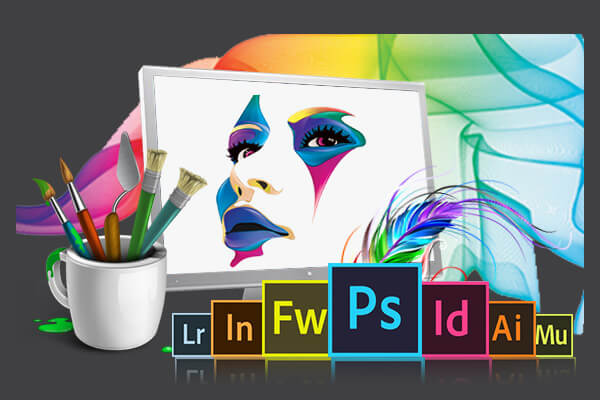Graphic Designing
In today's visually-oriented world, graphic design is pivotal in capturing attention, conveying messages, and shaping the overall perception of brands, products, and ideas. From sleek logos to eye-catching advertisements, graphic design is the artistic medium that bridges the gap between creativity and effective communication. In this article, we delve into the art of graphic design, exploring its fundamental principles, tools, and impact on various aspects of our lives.
Understanding Graphic Design
Graphic design creates visual content using elements such as typography, colors, images, and illustrations. It is a creative discipline that combines aesthetics, technical skills, and a deep understanding of the target audience to convey a message or evoke a particular emotion. Graphic designers work across various mediums, including print, digital, and multimedia, creating advertisements, websites, branding materials, packaging designs, and more.
The Principles of Graphic Design
At the heart of graphic design lie several fundamental principles guiding designers' creative process. These principles serve as the building blocks for visually compelling designs:
- Balance: Achieving balance in a design involves the distribution of visual elements to create a sense of equilibrium. It can be symmetrical or asymmetrical, depending on the desired effect.
- Contrast: Contrast involves juxtaposing elements with different characteristics, such as light and dark, large and small, or bold and subtle. Contrast adds visual interest and helps highlight critical elements.
- Hierarchy: Establishing a visual hierarchy helps guide the viewer's attention through the design. By using size, color, and placement, designers can prioritize information and create a clear flow of information.
- Typography: The choice and arrangement of typefaces (fonts) are crucial in graphic design. Typography should be legible, appropriate, and convey the desired tone and message.
- Color: Colors evoke emotions and create associations. Graphic designers use color theory to select harmonious color palettes that align with their brand or message.
- Unity: Unity refers to the cohesiveness and harmony of design elements. A unified design creates a sense of completeness and ensures that all elements work together seamlessly.
Tools of the Trade
Graphic designers employ various tools to bring their creative visions to life. While traditional mediums like pen and paper are still relevant, digital tools have revolutionized the field. Here are some essential tools commonly used in graphic design:
- Design Software: Applications like Adobe Photoshop, Illustrator, and InDesign provide comprehensive tools for creating and manipulating visual content. These programs enable designers to work with precision and flexibility.
- Digital Tablets: Drawing tablets allow designers to sketch and illustrate directly on the screen, providing a more intuitive and natural experience than a mouse or trackpad.
- Stock Resources: Stock photos, illustrations, and vectors are valuable resources for graphic designers, providing a vast library of ready-to-use visuals that can be incorporated into designs.
- Online Platforms: Web-based design tools and platforms have made graphic design more accessible. These platforms often provide templates, drag-and-drop functionality, and collaboration features.
The Impact of Graphic Design
Graphic design profoundly impacts our lives, often influencing our choices, opinions, and emotions. Here are a few areas where graphic design plays a vital role:
- Branding and Marketing: Logos, packaging, advertisements, and websites are essential components of branding and marketing strategies. Graphic design helps businesses convey their identity, capture attention, and differentiate themselves from competitors.
- User Experience (UX) Design: In the digital realm, graphic design is crucial for creating intuitive and visually appealing user interfaces. Effective UX design enhances user satisfaction, engagement, and accessibility.
